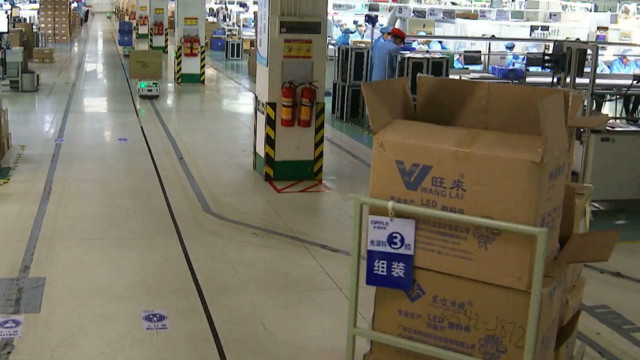Manufacturing has undergone major changes in the last decade, and remains critical to developing and developed countries alike. China has been seen as the world’s factory – and a global leader in manufacturing.
CGTN’s Han Bin reports.
The traditional mode of manufacturing is being replaced by automated production lines.
In Zhongshan, one of China’s leading LED lighting brands, OPPLE, started 20 years ago. Zhou Xiaoying works for the company, and used to be proud of being a Chinese worker. But she has seen the hard times of China’s manufacturing slowdown.
Still, she has a deep affection for the industry.
“Whenever I passed by a super market or hotel, I would stop and check the brand,” Xiaoying said. “If they weren’t OPPLE, I would compare their advantages with OPPLE. ”
For the workers, automation may not be good news. It will likely take over their jobs and eat away at their wages. Across the country, China is pushing forward a rejuvenation of its manufacturing industries, at a time when new technologies are re-drawing the global picture.
In OPPLE’s Wujiang factory showroom, China’s flagship lighting company has its own solutions to light up the world. Chairman Wang Yaohai hopes to expand global sales, but he says China’s technological transformation still has a long way to go. It is already, however, changing the face of the global manufacturing industry.
“The technical level, the threshold for entry is relatively low, but the threshold is high if you want to do it well,” Yaohai said. “Because traditional lighting in the past relied on big foreign brands, like GE, Phillips, Osram. Today, new technology has pulled the entire industry’s domestic and overseas technology to the same level.”
Despite the challenges of overcapacity, higher labor costs, and fierce competition, Yaohai is optimistic. He says the global lighting industry is at crucial point, with new innovative solutions and energy efficiency solutions. He believes China does not have to follow the path of developed countries; It can leap frog by encouraging smart and innovative lights, manufactured for both professional and home use. His strategy is in line with the government’s bigger plan of “Made in China 2025,” a big leap for industrialization for all industries.
“Consumption is upgrading, and the demand for better and targeted products in the EU and U.S. markets has been on the rise. The Chinese enterprises are very competitive in overseas markets. The key is quality.”
China hopes to raise its position in the global industrial chain, going from a big manufacturing hub to a great manufacturing power. The biggest question is how to make the sector more competitive in the global market.
For Zhou Xiaoying, she said workers need to adapt or be let go, and agrees that only high-end goods will meet customer demand. Gone are the days when a company could thrive by offering low-price products. She knows her factory days are numbered, but she’s holding on to what she can, for as long as she can.
 CGTN America
CGTN America
